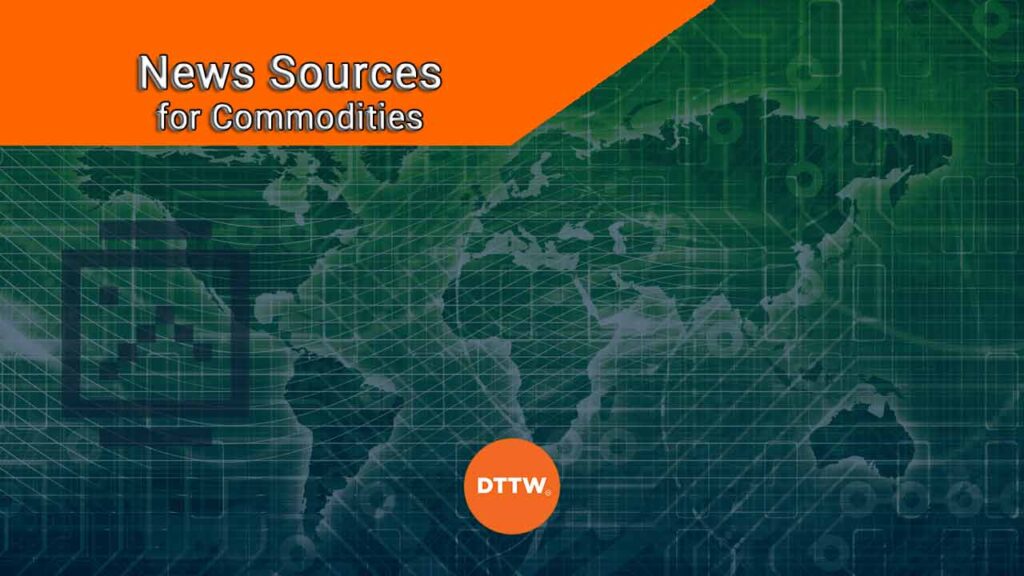In recent articles, We have written on commodities and how to trade the trillion a day market. As We have pointed before, the key to be a successful commodities trader is to understand the supply and demand dynamics.
In this article, we will highlight some of the best natural resources you should use when trading commodities to know the supply and demand.
Table of Contents
Key data for commodity trading
Data is an important part when trading any asset. For stock traders, having data like corporate earnings and valuations plays an important role. Similarly, having key economic data like employment, inflation, and GDP plays an important part when trading currencies or forex.
Data is equally important when you are trading all types of commodities like gold, silver, nickel, and copper. This data can help you make decisions on whether to buy or sell an asset.
Some of the top data to watch when trading commodities are:
- Inventories – Oil and natural gas inventories are important data when you are trading these commodities. The US publishes them every week.
- Mining activity – Some countries like Chile and South Africa usually publish data on the volume of commodities that they produced every month.
- Supply and demand estimates – This is an important data published by the US Department of Agriculture (USDA). It shows estimates of demand and supply for key agricultural commodities like corn, soybeans, and wheat.
- Industrial production – Countries like China and the US publish their industrial production numbers every month. These numbers can provide color on the demand and supply of key commodities like silver and copper.
- Inflation – Inflation is another important data that shows the overall rise and fall of prices. The data can help you predict whether the Federal Reserve will hike or lower interest rates.
Best news sources for commodities
Commodities Futures Trading Commission (CFTC)
The CFTC is the regulator for the commodities futures trading in the United States. It is like the SEC but for commodities futures.
The commission has all the data from the biggest exchanges like the CME and CBOE, and every Friday it releases the Commitment of Traders (COT) report. This is a report that shows the positions initiated by large banks, hedge funds, and traders in the market.
You can use this data to forecast how these traders have placed their orders.
Energy Information Administration (EIA)
The EIA is a US government agency that studies the energy market. The agency has all the data from miners in the country. Every week, the agency releases data on the inventories or the stockpiles of the US crude oil. The data is released every Wednesday and often tends to move the crude prices.
As a trader, you should carefully follow the data and visit the agency for its other resources.
» Related: How to Analyze and Make Decisions on Crude Oil
In addition to the EIA, you can get important clues on demand and supply from the OPEC. This is the largest oil group in the world, made up of the biggest oil exporting countries except the US and Russia.
Every month, the organization publishes data on supply and demand that too moves the crude oil markets.
Another important crude oil data source is the American Petroleum Institute (API), which is the biggest oil body in the US (it has more than 10 million members). Every week, it also publishes key data on stocks that supplements the government data.
Department of Agriculture
The US Department of Agriculture is a major source of credible data on production of key crops. Every month, the department releases the World Agricultural Supply and Demand Estimates (WASDE). This is a closely followed report that shows the supply and demand dynamics of main agricultural and livestock commodities.
Often, the price of the commodities tend to move in the direction of the WASDE report.
» Related: How to Trade the Agricultural Commodities Profitably
International Copper Alliance
The Copper Alliance is the largest association for copper miners. Its members include copper giants like Anglo American, Glencore, BHP Billiton, and Rio Tinto among others. It regularly publishes data on copper, which can help traders understand the underlying issues affecting the industry.
» Related: The importance of Copper as Economic Indicator
World Cocoa Association
The World Cocoa Association is the largest association of cocoa producing countries. The biggest of these countries are Ivory Coast and Ghana. With the cocoa prices falling, the association is working to be the OPEC of cocoa.
By this, they can reduce supply when the prices are lower to boost the prices. If you are interested in the cocoa market, you should take time to study the World Cocoa Association data.
World Gold Council
World Gold Council is an organization made of leading organizations like Barrick Gold, Agnico Eagle, Newmont, and Yamana Gold among other large miners.
The organization publishes regular reports on gold every month. It is one of the most credible resources of supply and demand metrics.
Technical analysis in commodities trading
These numbers are important for commodity traders and investors. They form part of what is known as fundamental analysis.
Technical analysis, which is the study of chart patterns is equally important. It is a trading approach that include looking at chart patterns and using indicators to make decisions on whether to buy and sell assets.
There are three main parts of technical analysis. First, there is where you use indicators like moving averages and the Relative Strength Index (RSI) to predict where the commodity will move to.
Second, there is the idea of looking at chart patterns like triangles, wedges, and rounded bottom to predict whether the commodity will rise or fall.
Finally, you can use candlestick patterns like doji, harami, and bullish engulfing to make this prediction.
External resources to improve your Natural Resources Trading
- Making big data work for commodities – Wired





